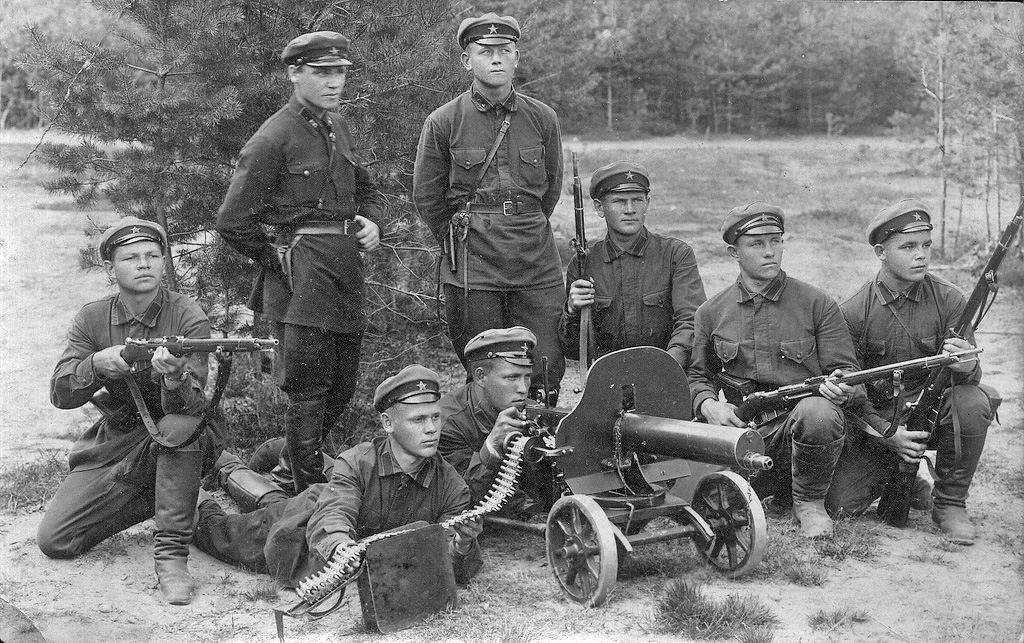Maxim was born in Maine but made his fortune in Europe. He died in his adopted home of London on this day at age 76.
He was famous, of course, for his invention of a very effective machinegun. Perfected in the 1880s, the design remains in some limited use today, and of course during World War One it equipped several nations that were at war with each other. Germany, the United Kingdom, Russia, and to a limited extent (but not in Europe) the United States all used the heavy machinegun design. The UK and the USSR would retain their versions all the way through World War Two and the design would see plenty of post war use.

Solders of the Red Army with a Maxim machinegun.
The design, suffice it to say, made him a rich man.
The machinegun itself, that is the invention of a weapon that fired repeated shots through the process of loading its own chamber and firing, as long as the trigger was depressed and ammunition fed, cannot be attributed to Maxim. That such a weapon would be invented became inevitable with the perfection of cartridges for firearms, and in particular the invention of smokeless ammunition. Indeed, even before that the path way was becoming clear with the introduction of the Gatling gun, a weapon that was not a machinegun but which made it essentially clear one would soon be invented. And other machineguns were introduced contemporaneously wiht Maxim's. But Maxim's heavy gun was a particularly good and effective design. It can be argued that it was sufficiently good that it contributed to the battlefield stalemate of World War One, although those who claim it caused it overemphasize its role. Still, it's a bit of an irony, perhaps, that Maxim would pass on at a time when so many younger men were passing on as well, a victim of his invention.
Heavy Maxim automatic gun, the "pom pom", in actuality a type of automatic cannon, in use by the U.S. Navy.
The machinegun itself, that is the invention of a weapon that fired repeated shots through the process of loading its own chamber and firing, as long as the trigger was depressed and ammunition fed, cannot be attributed to Maxim. That such a weapon would be invented became inevitable with the perfection of cartridges for firearms, and in particular the invention of smokeless ammunition. Indeed, even before that the path way was becoming clear with the introduction of the Gatling gun, a weapon that was not a machinegun but which made it essentially clear one would soon be invented. And other machineguns were introduced contemporaneously wiht Maxim's. But Maxim's heavy gun was a particularly good and effective design. It can be argued that it was sufficiently good that it contributed to the battlefield stalemate of World War One, although those who claim it caused it overemphasize its role. Still, it's a bit of an irony, perhaps, that Maxim would pass on at a time when so many younger men were passing on as well, a victim of his invention.
U.S. soldiers in machine gun school with a Maxim machine gun. The U.S. is one of the few nations to adopt the Maxim that never really warmed up to it. While the US had Maxims and Maxim pattern Vickers machine guns prior to World War One, it didn't send them overseas and instead used machine guns acquired from our Allies (including some Vickers) while working on a John Browning design that was standardized in 1917 as the M1917.



No comments:
Post a Comment